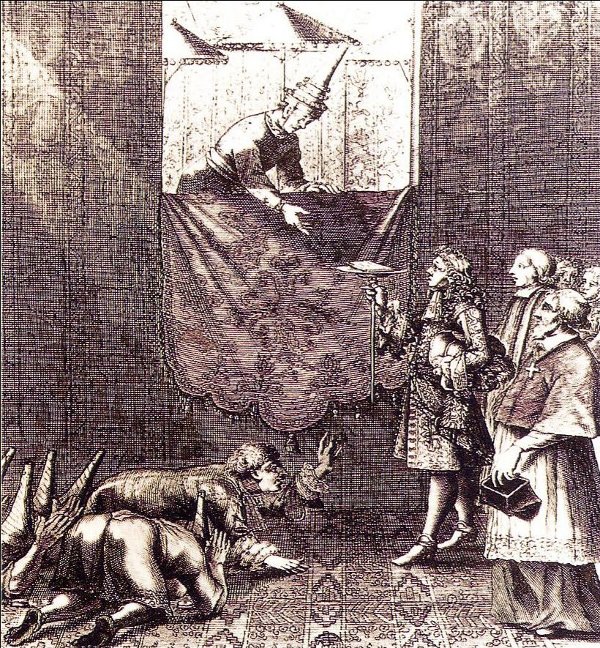It doesn't look like much, but the Dusitsawan Thanya Mahaprasat Hall is a place to really bring out the history geek in me. Having read the accounts of the French Ambassador Chevalier de Chaumont presenting his letter from King Louis XIV to King Narai, and seen many depictions of it like the one below, it was exciting to finally see the place where it really happened.
 The arched window where the king would sit enthroned.
The arched window where the king would sit enthroned.The ruins of the tall narrow building lie between the old Suttha Sawan Pavilion of King Narai and the newer throne hall of King Mongkut. The reception hall is a rather small squarish room with a very high ceiling. High up on the western wall of the room is the pointed-arched opening where the king would sit enthroned. The position of the throne ensured that the king's feet were above the heads of anyone standing in the reception hall, even though the custom was for everyone to kneel and crawl to the throne.

Chevalier de Chaumont presents a letter from Louis XIV to King Narai
The tale of the presentation of the French embassy is very much about the clash of Eastern and Western cultures and customs. In Europe, Ambassadors were treated as direct representatives of a 'fellow' sovereign, and so generally treated on equal terms. Even in pre-revolution France, courtiers and ambassadors were not required to kowtow to the king.
Things were very different in Siam, where the king was still revered as almost a god. Nobody was allowed to approach the king on foot, or even hand him things directly. So, when King Louis XIV sent his first embassy to Siam in 1685, there was a considerable amount of negotiation required to try and keep either side from feeling insulted. The Chevalier refused to kowtow, and under no circumstances would the Siamese courtiers all the Ambassador to be on equal footing with the king. The compromise that was reached was that the Ambassador and his retinue would be allowed to stand, while the king would sit enthroned in his customary position. The Ambassador would hand the letter from King Louis XIV up to King Narai on a long-handled tray.
However, when the time came, the Chevalier held the tray so low that the king had to lean down to take it. To this day, Thais are still deeply insulted by this behavior. In itself, the slight was probably not the reason for the ultimate failure of the French embassy, but it was probably doomed from the start anyway. The French hoped to not only open trade ties with Siam, but also convert the king to Catholicism. They were encouraged by the king's close adviser Constantine Phaulkon to believe this was possible, but it's hard to believe that someone as astute as Phaulkon could have believed this.
The etching above of the presentation has been reproduced in many mediums over the years, although the uniformity of the depiction suggests there is a single source for all the pictures. The Western man kneeling below the king with his hand raised is Phaulkon. Behind the Chevalier de Chaumont (holding the tray) is the Abbè de Choisy and the Jesuit head of mission to Siam.